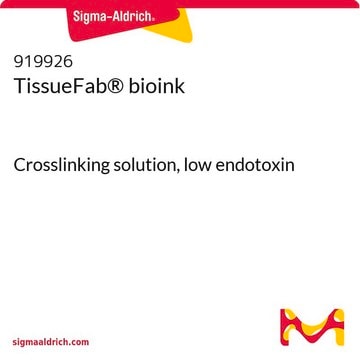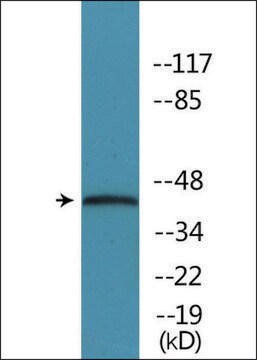추천 제품
형태
liquid
불순물
<25 EU/mL Endotoxin
색상
white
pH
6.5-7
density
1.050 g/mL
응용 분야
3D bioprinting
저장 온도
2-8°C
일반 설명
3D bioprinting is the printing of biocompatible materials, cells, growth factors, and the other supporting materials necessary to yield functional complex living tissues. 3D bioprinting has been used to generate several different types of tissue such as skin, bone, vascular grafts, and cartilage structures. Based upon the desired properties, different materials and formulations can be used to generate both hard and soft tissues. While several 3D printing methods exist, due to the sensitivity of the materials used, extrusion-based methods with bioinks are most commonly employed.
Material comes prepackaged in syringe with 5ml of product.
Material comes prepackaged in syringe with 5ml of product.
애플리케이션
Due to its low cost, biocompatibility, and facile gelation, alginate is one of the most common components of commercial bioinks. Alginate is a naturally-occurring polysaccharide, obtained from the cell walls of brown algae, that is composed of guluronic and mannuronic acid. While alginate forms hydrogels under mild conditions, nanocellulose is added in this formulation to improve printability and final structure properties. In addition to alginate and nanocellulose, Arg-Gly-Asp (RGD) motifs have been added to improve cell adhesion after printing. Cellulose-Alginate-RGD acellular bioink is provided as a ready-to-print, low endotoxin, and aseptic formulation in 5 mL syringes.
분석 메모
Appearance: White viscous gel
법적 정보
Product of Cellink
Storage Class Code
12 - Non Combustible Liquids
WGK
WGK 2
Flash Point (°F)
Not applicable
Flash Point (°C)
Not applicable
시험 성적서(COA)
제품의 로트/배치 번호를 입력하여 시험 성적서(COA)을 검색하십시오. 로트 및 배치 번호는 제품 라벨에 있는 ‘로트’ 또는 ‘배치’라는 용어 뒤에서 찾을 수 있습니다.
이미 열람한 고객
Carmen C Piras et al.
Biomaterials science, 5(10), 1988-1992 (2017-08-23)
3D bioprinting is a new developing technology with lots of promise in tissue engineering and regenerative medicine. Being biocompatible, biodegradable, renewable and cost-effective, cellulosic nanomaterials have recently captured the attention of researchers due to their applicability as inks for 3D
P Selcan Gungor-Ozkerim et al.
Biomaterials science, 6(5), 915-946 (2018-03-02)
Bioprinting is an emerging technology with various applications in making functional tissue constructs to replace injured or diseased tissues. It is a relatively new approach that provides high reproducibility and precise control over the fabricated constructs in an automated manner
문서
Professor Shrike Zhang (Harvard Medical School, USA) discusses advances in 3D-bioprinted tissue models for in vitro drug testing, reviews bioink selections, and provides application examples of 3D bioprinting in tissue model biofabrication.
프로토콜
Frequently asked questions (FAQs) for KAPA SYBR® FAST One-Step qRT-PCR Kits.
자사의 과학자팀은 생명 과학, 재료 과학, 화학 합성, 크로마토그래피, 분석 및 기타 많은 영역을 포함한 모든 과학 분야에 경험이 있습니다..
고객지원팀으로 연락바랍니다.










